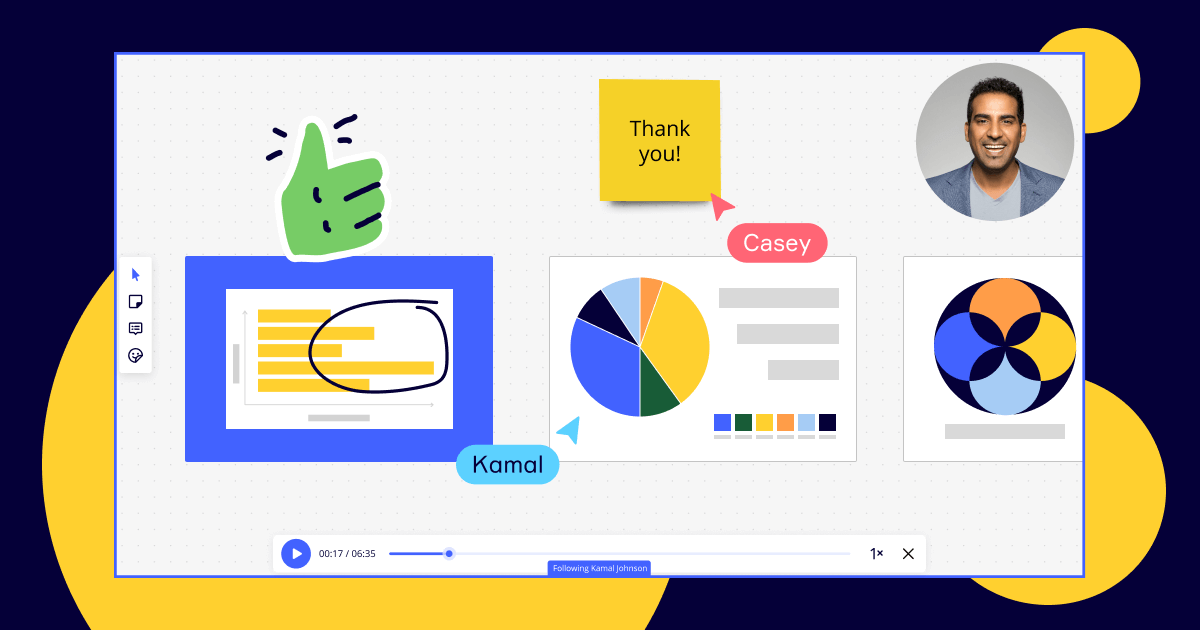Today’s workers span four generations, each bringing distinctive perspectives on life, work, and everything in between. From Gen Z to Millennials, Gen X, and Baby Boomers, workers’ life stages and professional journeys shape their preferences and priorities—and also influence how they collaborate with one another.
By leveraging generational insights from Miro’s “The Ways We Work” survey, companies and leaders can take collaboration to a new, and more age-inclusive, level.
Collaboration isn’t just about work—it’s about people
For many workers, collaborating on projects isn’t just an opportunity to showcase their skills and do impactful work—it’s also a meaningful way to build relationships with coworkers. In fact, our survey found that collaborating on work projects replaced casual chats in the office as the best way to build connections with colleagues between pre-pandemic and today. But a closer look at the generational data paints a more nuanced story.
While Millennials (26%) and Gen X (27%) agree that collaboration is the best way to develop and nurture relationships with coworkers, Boomers say group work is tied for first place with casual chats via online messaging platforms. Gen Z, however, isn’t sold on collaborative work as a gateway to lasting bonds: Only 14% say collaborating is the best approach they’ve found to connect, relying instead on casual in-person and online chats.
One possible reason for this is that the youngest generation, many of whom entered the workforce during the COVID-19 pandemic, hasn’t had a taste of collaborative work during more typical times and they’re still learning the ropes. By devising an informal mentorship dynamic—especially between Gen Z and Baby Boomer workers, who both like to communicate through and bond over casual online chats—leaders and managers can foster a positive company or team environment that’s grounded in learning and partnership.
Learn more about Miro
Asynchronous collaboration can counteract the drain of “communication overhead”
There’s ample research showing how meetings sap creativity and increase stress, and knowledge workers’ experiences back this up. In our survey, all generations report that virtual meetings are the most draining part of their workday, followed by emails and instant messaging.
To reduce unnecessary meetings, leaders should encourage their teams to be extra mindful of what work must be done synchronously and, in turn, provide resources to facilitate asynchronous work.
For example, visual workspaces like Miro give project partners space to engage creatively and deeply on their own time. What’s more, this approach can be more inclusive of diverse communication and working styles, especially for those who find collaborating asynchronously through messaging apps or email exhausting. Empowering workers to diversify how and when they collaborate benefits both their energy levels and the business by driving greater engagement and innovation.
Bookend generations want to grow, while those in the middle crave balance
To improve cross-generation collaboration even more, stay attuned to how different generational values and preferences shape workers’ professional priorities.
In Miro’s survey, the bookend generations (i.e. Gen Z and Baby Boomers) cite opportunities for growth and continuous learning as the top reason for improved relationships with their managers. The younger generation is focused on building their careers, while more experienced workers are ready to refocus on theirs, and they both appreciate leaders who recognize these motivations. Creating chances for collaborative work is a great way to let these workers showcase existing skills and learn new ones from their partners. In furthering the professional development of their teams, managers can also strengthen ties with their reports.
Meanwhile, the middle—or “sandwich”—generations say that work-life balance is the biggest factor in building stronger relationships with their managers. This doesn’t mean Millennials and Gen X aren’t willing to do the work; rather, they want to work smarter, not just more. This makes sense for generations that are often juggling work with taking care of children and other loved ones. When it comes to collaborative projects, these generations appreciate the flexibility that asynchronous collaboration provides.
Attention to generational differences means better collaboration for everyone
When workers come together on collaborative projects, they bring diverse skills and superpowers to create something bigger than the sum of their parts. Paying attention to how the preferences and priorities of the four generations of workers both diverge and intersect can help leaders and managers enable more engaging, impactful, and inclusive collaboration among and across teams.
Methodology: Findings reflect data gathered from an interactive online survey of 2,053 full-time knowledge workers in North America, conducted in August-September 2022.




